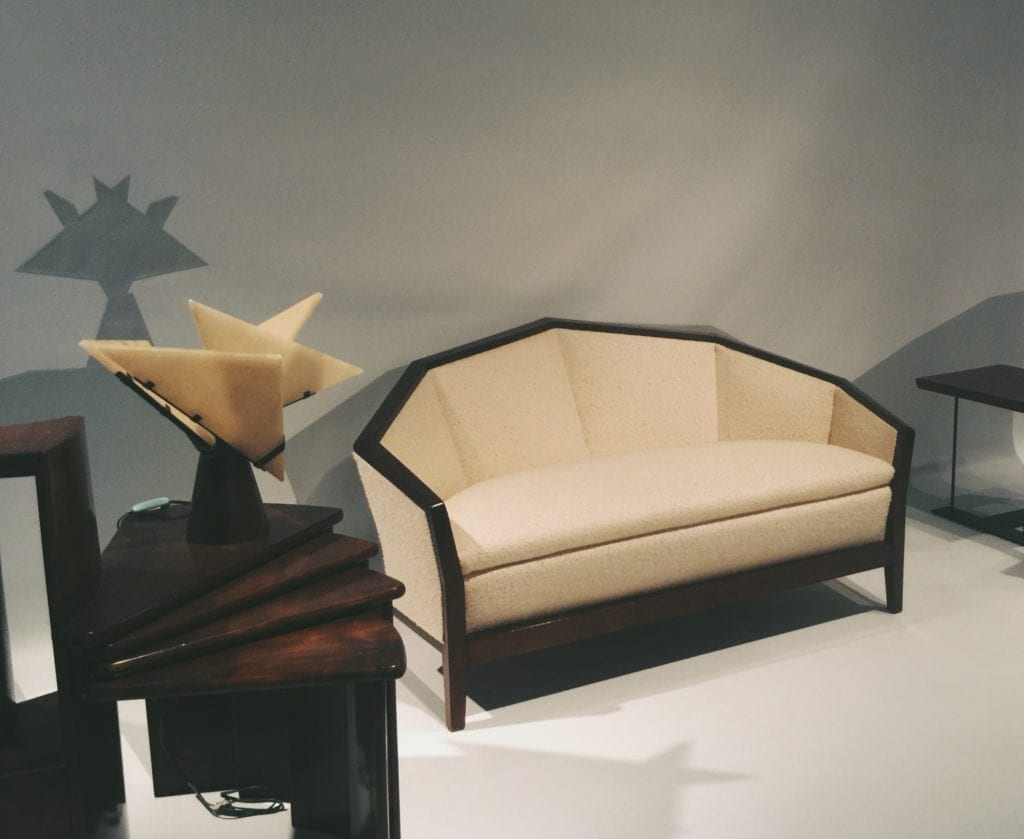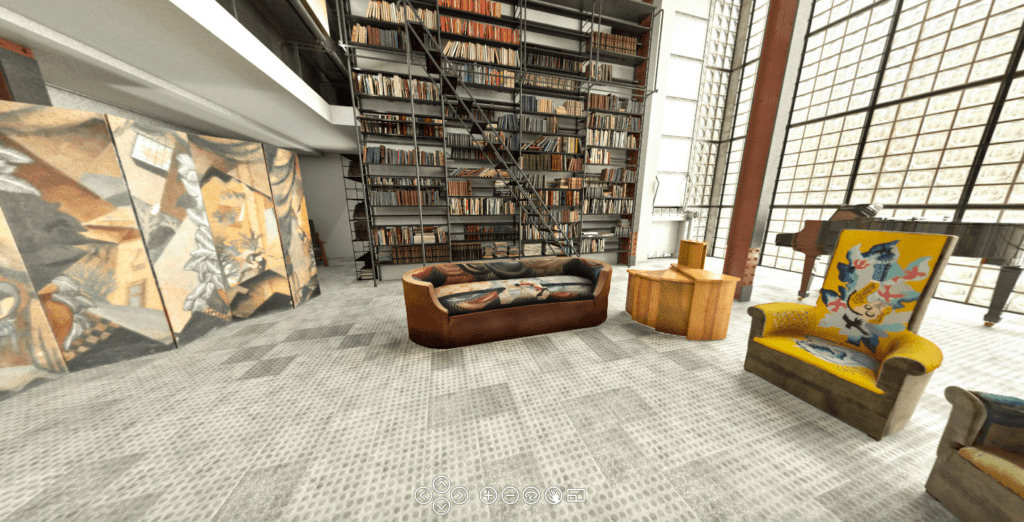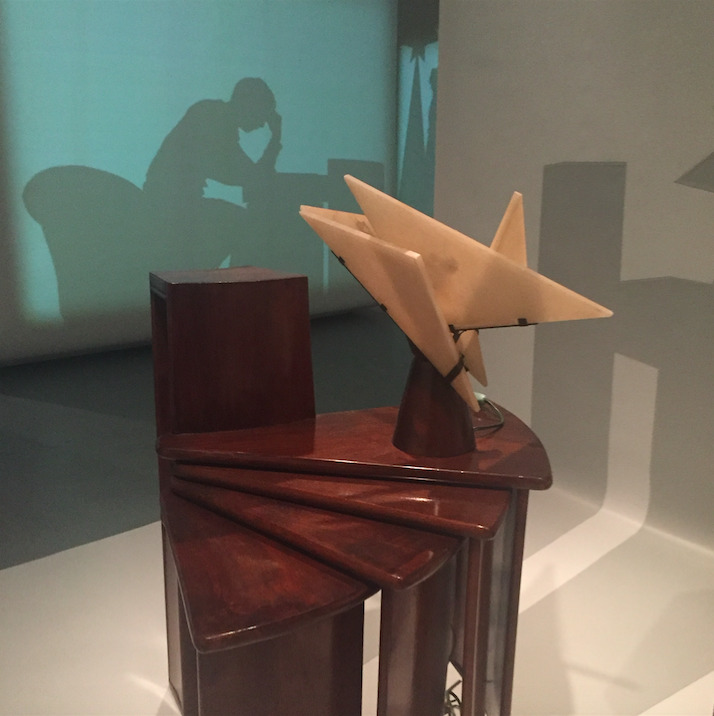“I am a prisoner of a gaudy and unlivable present, where all forms of human society have reached an extreme of their cycle and there is no imagining what new forms they may assume.”
-Italo Calvino
“Chairs are architecture, sofas are bourgeois.”
-Le Corbusier

During the Winter/Spring season of 2017, The Jewish Museum hosted the extensive retrospective, Pierre Chareau: Modern Architecture and Design, on the French 20th-century designer and architect, Pierre Chareau (1883-1950). Chareau is celebrated for his exquisite furnishings and interiors, and the visionary way in which he conceived of space and form. Polished and stylish designs, featuring rare-wood veneers, exotic skins, clean profiles, and technological novelty characterize much of Chareau’s architectural insight.
The exhibition does a thorough work of combining both Chareau’s biographical background and his contributions to the arts. Chareau first emerged in the 1920s, creating designs that were equally concerned with form as well as with function. Rather than merely filling spaces with pieces of furniture, he chose to shape space itself—what he called “architecture intérieure”—bringing architecture and furniture together to form a whole. He strived for coherency and continuity in his spaces, often knocking down walls and replacing them with sliding partitions, and dramatizing interiors with highly sculptural ceilings. Lighting also remained fundamental to crystallizing the myriad of forms in his invention, as alabaster fixtures and wrought iron lamps were often found dispersed throughout his interiors. His pieces are also known for their ingenious craftsmanship and kinetic features, as many of his vanities, desks, and tables featured movable parts.
At the time, modern furnishings provided means to flaunt and singularize wealth, with many of Chareau’s clients employing artistes décorateurs, or professional curators. These curators formed part of the Société des Artistes Décorateurs, a prestigious organization of interior designers in Paris who exhibited their work at annual salons. Chareau typically made small selections of his most popular furniture with subtle variations in material, proportions, or detailing, and even produced custom works for a select few. In the midst of the Great Depression, he tried to employ cheaper metals and glass materials—although this attempt to open up his line for a broader market was regarded as ultimately unsuccessful. Nonetheless Chareau was known for a progressive sensibility, surrounded by burgeoning middle and upper classes.
At the heart of the Jewish Museum’s exhibition, Chareau’s Maison de Verre’s virtual reality 360° rendering of the Grand Salon of the Maison de Verre, Paris designed by Diller Scofidio + Renfro installation stands out from the rest of the show. Immersing the viewer in different sections of the house, the virtual reality headsets transport the audience immediately to the glass house. The Maison de Verre was constructed in Paris in 1932. Designed in collaboration with Dutch architect, Bernard Bijvoet, the Maison de Verre is regarded as one of the most original houses of the 20th century and remains a point of historical reference today. This architectural relic was originally commissioned by Jean Dalsace and Annie Bernheim Dalsace, Chareau’s most valuable patrons. More than just a house, the Maison de Verre transcends the canonical definition of “une maison,” as it also functions like an elegant machine. Louis Dalbet, Chareau’s architectural collaborator for the Maison de Verre, was in charge of the iron craftsmanship present in the house. Masked behind the glass, the iron provides an industrial framework to the fluidity of the layered interior.

The house also boasts many of Chareau’s interior design pieces, including his famous lamp La Religieuse. Considered his magnum opus, Chareau’s Maison de Verre continues to be an exemplar of modern Parisian design aesthetic. Elevated from its status as a furnishing to an objet d’art, La Religieuse combines its sculptural form and function. Chareau’s exhibition at the Jewish Museum makes sure to highlight not only the object’s history, but also its distinguished shape. The visual contrast between the round softness of the wooden base and the sharp-edged alabaster portrays the duality of Pierre Chareau’s design and architectural approach: wood and alabaster, or iron and glass. Its name is derived from the cornette, a piece of headwear worn by nuns from the 15th through 17th centuries. The light exposed by La Religieuse was meant to compliment the natural lighting in its prescribed room. In addition to this quintessential lighting fixture, Chareau oeuvre remains relevant to contemporary design and decorative art.

Chareau’s exhibition at The Jewish Museum challenges the accepted notion of the curatorial stage within the realm of design and architecture. The show provides a detailed display of Chareau’s private and professional life and also reflects the museum’s mission of promoting Jewish heritage. While there was clear underlining of the theme of opulence in 20th century decorative modernism, the exhibition environment succeeds most in shedding light on how a space can shape different modes of interpretation.
